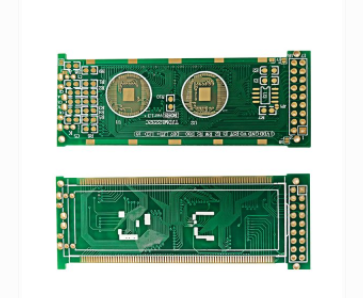There are ten heat dissipation methods for PCB boards
There are actually ten heat dissipation methods for PCB boards! The heat dissipation of the PCB circuit board is a very important part, so what is the heat dissipation technique of the PCB circuit board, the editor of the circuit board manufacturer will introduce you one by one.
1. Heat dissipation through the PCB board itself The currently widely used PCB boards are copper-clad/epoxy glass cloth substrates or phenolic resin glass cloth substrates, and a small amount of paper-based copper-clad boards are used. Although these circuit board substrates have excellent electrical properties and processing properties, they have poor heat dissipation. As a heat dissipation method for high-heating components, it is almost impossible to expect heat from the PCB itself to conduct heat, but to dissipate heat from the surface of the electronic components to the surrounding air.

However, as electronic products have entered the era of miniaturization of components, high-density mounting, and high-heating assembly, it is not enough to rely on the surface of a component with a very small surface area to dissipate heat. At the same time, due to the extensive use of surface mount components such as QFP and BGA, the heat generated by the components is transferred to the PCB board in a large amount. Therefore, the best way to solve the heat dissipation is to improve the heat dissipation capacity of the PCB itself that is in direct contact with the heating element. To be transmitted or emitted.
2. For equipment that adopts free convection air cooling, it is best to arrange integrated circuits (or other devices) vertically or horizontally.
3. Use reasonable wiring design to achieve heat dissipation. Because the resin in the circuit board has poor thermal conductivity, and the copper foil lines and holes are good heat conductors, increasing the remaining rate of copper foil and increasing the heat conduction holes are the main means of heat dissipation. To evaluate the heat dissipation capacity of a PCB, it is necessary to calculate the equivalent thermal conductivity of a composite material composed of various materials with different thermal conductivity-an insulating substrate for the PCB.
4. High heat-generating components plus radiators and heat-conducting plates. When a small number of components in the PCB generate a large amount of heat (less than 3), a heat sink or heat pipe can be added to the heat-generating components. When the temperature cannot be lowered, A radiator with a fan can be used to enhance the heat dissipation effect. When the number of heating devices is large (more than 3), a large heat dissipation cover (board) can be used, which is a special heat sink customized according to the position and height of the heating device on the PCB or a large flat heat sink Cut out different component height positions. The heat dissipation cover is integrally buckled on the surface of the component, and it is in contact with each component to dissipate heat. However, the heat dissipation effect is not good due to the poor consistency of height during assembly and welding of components. Usually, a soft thermal phase change thermal pad is added on the surface of the component to improve the heat dissipation effect.
5. The devices on the same printed circuit board should be arranged as far as possible according to their calorific value and degree of heat dissipation. Devices with small calorific value or poor heat resistance (such as small signal transistors, small-scale integrated circuits, electrolytic capacitors, etc.) At the uppermost flow (inlet) of the cooling airflow, devices with large heat generation or good heat resistance (such as power transistors, large-scale integrated circuits, etc.) are placed at the furthest downstream of the cooling airflow.
6. In the horizontal direction, the high-power devices should be placed as close to the edge of the printed circuit board as possible to shorten the heat transfer path; in the vertical direction, the high-power devices should be placed as close to the top of the printed circuit board as possible to reduce the impact of these devices on other parts. The effect of device temperature.
7. The heat dissipation of the printed PCB board in the equipment mainly relies on air flow, so the air flow path should be studied during the design, and the device or printed circuit board should be reasonably configured. When air flows, it always tends to flow in places with low resistance, so when configuring devices on a printed circuit board, avoid leaving a large airspace in a certain area. The configuration of multiple printed circuit boards in the whole machine should also pay attention to the same problem.
8. The temperature-sensitive device is best placed in the lowest temperature area (such as the bottom of the device). Never place it directly above the heating device. It is best to stagger multiple devices on the horizontal plane.
9. Arrange the devices with the highest power consumption and the highest heat generation near the best position for heat dissipation. Do not place components with higher heat generation on the corners and peripheral edges of the printed circuit board, unless a heat sink is arranged near it. When designing the power resistor, choose a larger device as much as possible, and make it have enough space for heat dissipation when adjusting the layout of the printed board.